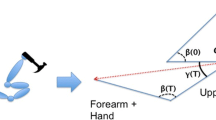Abstract
A sedentary routine at work can cause various muscular, skeletal or visual diseases, however these can be prevented with what is known as active pauses. This article is intended to illustrate how software can help reduce the risk of occupational disease due to the sedentary lifestyle of an office job, for this purpose a web application was developed under the SCRUM methodology, which makes use of the TensorFlow, Flask PoseNet model and python, for an active pause control application which is a proven practice of reducing the type of diseases already mentioned. With these tools it was possible to develop an algorithm capable of comparing two human figures; which serves to compare whether the user of the program is performing or not correctly performing the active pause exercise, with an average error squared on the order of 10−32. Finally, The application can keep track of the figure and exercises performed by the user just by using the user personal webcam and the comparison algorithm developed, leaving behind the use of tools such as Kinect.













Similar content being viewed by others
References
Chikhaoui B, Ye B, Mihailidis A (2016) Feature-level combination of skeleton joints and body parts for accurate aggressive and agitated behavior recognition. J Ambient Intell Humaniz Comput 8(6):957–976. https://doi.org/10.1007/s12652-016-0415-y
Deb S, Sharan A, Chaturvedi S, Arun A, Gupta A (2019) Interactive dance lessons through human body pose estimation and skeletal topographies matching. Int J Comput Intell IoT 2(4). Retrieved from SSRN: https://ssrn.com/abstract=3361142
Díaz X, Mardones M, Mena C, Rebolledo A, Castillo M (2011) Pausa activa como factor de cambio en actividad física en funcionarios públicos. Revista Cubana de Salud Pública 37(3):303–313
Elaoud A, Barhoumi W, Zagrouba E, Agrebi B (2019) Skeleton-based comparison of throwing motion for handball players. J Ambient Intell Human Comput. https://doi.org/10.1007/s12652-019-01301-6
Hou Y, Yao H, Li H, Sun X (2017) Dancing like a superstar: action guidance based on pose estimation and conditional pose alignment. In: 2017 IEEE international conference on image processing (ICIP), Beijing, pp 1312–1316. https://doi.org/10.1109/icip.2017.8296494
Januario LB, de Moreira FCR, Cid MM, Samani A, Madeleine P, Oliveira AB (2016) Effects of active pause pattern of surface electromyographic activity among subjects performing monotonous tasks: a systematic review. J Electromyogr Kinesiol 30:196–208. https://doi.org/10.1016/j.jelekin.2016.07.009
Jutinico CJM, Montenegro-Marin CE, Burgos D, Gonzalez R (2018) Natural language interface model for the evaluation of ergonomic routines in occupational health (ILENA). Ambient Intell Human Comput. https://doi.org/10.1007/s12652-018-0770-y
Kayembe M (2012) Human Posture Recognition and Good Posture Recommendation. (Tesis de maestría en Ciencias de la Computación), universidad de Nairobi, Nairobi
Kolda L, Krejcar O, Selamat A, Kuca K, Fadeyi O (2019) Multi-biometric system based on cutting-edge equipment for experimental contactless verification. Sensors 19:3709
Kumar A, Kumar A, Kumar Singh S, Kala R (2016) Human activity recognition in real-times environments using skeleton joints. Int J Interact Multimed Artif Intell 3(7):61. https://doi.org/10.9781/ijimai.2016.379
Liu Y, Xu Y, Li S (2018) 2-D human pose estimation from images based on deep learning: a review. In: 2018 2nd IEEE advanced information management, communicates, electronic and automation control conference (IMCEC), Xi’an, pp 462–465. https://doi.org/10.1109/imcec.2018.8469573
Martinez J, Manuel J (2018) Sistema de Visión Artificial para la Detección y Corrección de Posturas en Ejercicios realizados por Fisicoculturistas. (Tesis para Ingenieros en computación), Departamento de Ingeniería, Universidad autónoma del estado de México, Toluca
Oliphant TE (2006) A guide to NumPy (vol 1). Trelgol Publishing, New York
Owen N, Sugiyama T, Eakin EE, Gardiner PA, Tremblay MS, Sallis JF (2011) Adults’ sedentary behavior. Am J Prev Med 41(2):189–196. https://doi.org/10.1016/j.amepre.2011.05.013
Rodríguez C, Dorado R (2015) ¿Por qué implementar Scrum? Revista Ontare 3(1):125–144. https://doi.org/10.21158/23823399.v3.n1.2015.1253
Saez Y, Baldominos A, Isasi P (2017) A comparison study of classifier algorithms for cross-person physical activity recognition. Sensors 17:66
Saleem N, Khattak M (2020) Deep neural networks for speech enhancement in complex-noisy environments. Int J Interact Multimed Artif Intell 6(1):84–90. https://doi.org/10.9781/ijimai.2019.06.001
St-Onge N, Samani A, Madeleine P (2017) Integration of active pauses and pattern of muscular activity during computer work. Ergonomics 60(9):1228–1239. https://doi.org/10.1080/00140139.2017.1303086
Sudin M, Abdullah S, Nasudin M (2019) Humanoid localization on robocup field using corner intersection and geometric distance estimation. Int J Interact Multimed Artif Intell IP 1:12. https://doi.org/10.9781/ijimai.2019.04.001
Uribe-Quevedo A, Perez-Gutierrez B (2013) Interactive pose estimation for active pauses. In: Stephanidis C (ed) HCI international 2013—Posters’ extended abstracts. HCI 2013. Communications in Computer and Information Science, vol 373. Springer, Berlin
Wang Y, Cao H, Jiang X, Tang Y (2019) Recognition of dorsal hand vein based bit planes and block mutual information. Sensors 19:3718
Author information
Authors and Affiliations
Corresponding author
Additional information
Publisher's Note
Springer Nature remains neutral with regard to jurisdictional claims in published maps and institutional affiliations.
Rights and permissions
About this article
Cite this article
Herrera, F., Niño, R., Montenegro-Marín, C.E. et al. Computational method for monitoring pauses exercises in office workers through a vision model. J Ambient Intell Human Comput 12, 3389–3397 (2021). https://doi.org/10.1007/s12652-020-02391-3
Received:
Accepted:
Published:
Issue Date:
DOI: https://doi.org/10.1007/s12652-020-02391-3




